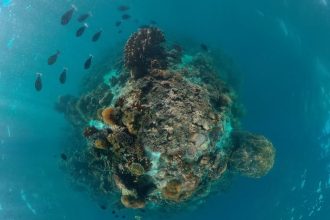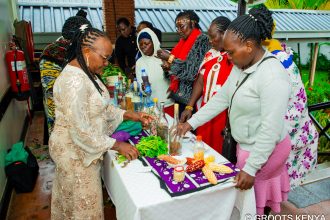By Lenah Bosibori
Amid growing concerns over water scarcity and frequent droughts exacerbated by inadequate storage infrastructure, the International Water Management Institute (IWMI) an international, research-for-development organization that works to solve water problems has launched its new Strategy 2024–2030
The strategy unveiled during the CGIAR Science Week in Nairobi looks forward to enhance water security, support climate adaptation, and drive sustainable agriculture across the region.
Speaking during the launch, IWMI Director General, Mark Smith, underscored the urgency of the strategy, emphasizing the need for collaborative, data-driven solutions to address water and climate challenges.
“Water is at the heart of climate resilience, food security and economic development. Our strategy is a roadmap for research and innovation to improve how water is managed in East Africa. It marks a significant milestone in IWMI’s mission to advance water security, climate resilience, and sustainable agricultural practices across East Africa,” said Smith.
The new strategy represents a significant leap forward in IWMI’s mission to enhance water security, support climate adaptation, and drive sustainable agriculture across East Africa. IWMI delivers on its mission by generating research evidence, developing innovations and solutions, and scaling them up through policies, networks and partners.
By harnessing cutting-edge research and fostering regional partnerships, IWMI aims to deliver solutions that improve livelihoods across East Africa.
“Through this strategy, we are committed to working with partners to implement science-backed solutions to address pressing water-related challenges, improve livelihoods, and support sustainable development in Kenya and across the broader East Africa region,” Smith said.
IWMI’s Regional Representative for East Africa, Abdulkarim H. Seid, highlighted the regional priorities and how the strategy will contribute to sustainable development goals by leveraging cutting-edge research and partnerships.
“The challenges facing East Africa, as with other parts of the world, require collective action. The strategy will guide IWMI’s work in the region, ensuring that we co-design and co-develop solutions with local communities, governments, academia, private sector and other key partners to build resilient and innovative water systems for a sustainable future,” Seid explained.
Held during the CGIAR Science Week, IWMI’s strategy launch event convened key stakeholders from government officials, research institutions, development partners, private sector and NGOs representatives to explore bold innovative approaches and solutions for sustainable water management in the region.
The event featured expert panel discussions comprising government officials, farmer organizations, research institutions, development partners and the private sector. In addition to the insights gained into how IWMI’s strategy aligns with national and regional development plans and means of engagement in its implementation, the interactive sessions and networking opportunities offered a platform for knowledge exchange and collaboration.
In his opening remarks, Ephanthus Kimotho the Principal Secretary State department for irrigation Ministry of Water, Sanitation and Irrigation said that, the strategy came at the right time as they had just launched the National Irrigation Sector Implementation Plan (NISIP).
“Just two weeks ago, we also launched the National Irrigation Sector Implementation Plan (NISIP). It’s a fortunate coincidence, and we are optimistic about aligning both frameworks to effectively address the pressing issue of water security.”
He further added that currently, only about 4% of Kenya’s arable land is under irrigation which is below the sub-Saharan average of 7%.
Citing the 2013 National Water Master Plan, Kimotho highlighted that Kenya has the potential to irrigate over 3.5 million acres. “However, whenever this figure is mentioned, the immediate question is do we have enough water to make it happen?”
“In truth, Kenya does have adequate water resources,” Kimotho clarified. “The problem lies not in physical scarcity but in economic scarcity. The cost of developing the infrastructure needed to access and use these water resources is the real barrier.”
As of 2022, the area under irrigation stood at 747,000 acres, which is only about 22% of the country’s potential. “Even within that, only about 60% is being optimally utilized. There are many hurdles one of the key ones being water extraction and distribution methods.”
The majority of existing irrigation is dependent on surface water flows, which, while accessible, come with challenges such as seasonal variability and underinvestment in water storage and delivery systems.




